
Gentleman's Agreement is a 1947 American drama film based on Laura Z. Hobson's best-selling 1947 novel of the same title. It concerns a journalist who poses as a Jew to research an exposé on the widespread antisemitism in New York City and the affluent communities of New Canaan and Darien, Connecticut. It was nominated for eight Academy Awards and won three: Best Picture, Best Supporting Actress, and Best Director.

Ginger Rogers was an American actress, dancer and singer during the Golden Age of Hollywood. She won an Academy Award for Best Actress for her starring role in Kitty Foyle (1940), and performed during the 1930s in RKO's musical films with Fred Astaire. Her career continued on stage, radio and television throughout much of the 20th century.
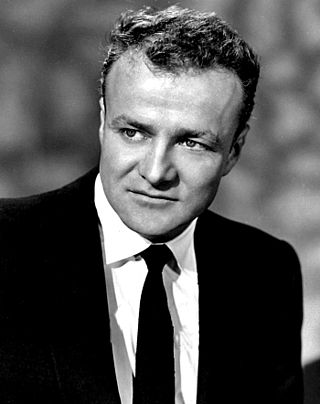
Robert Alba Keith, known professionally as Brian Keith, was an American film, television, and stage actor who in his six-decade career gained recognition for his work in films such as the Disney family film The Parent Trap (1961); Johnny Shiloh (1963); the comedy The Russians Are Coming, the Russians Are Coming (1966); and the adventure saga The Wind and the Lion (1975), in which he portrayed President Theodore Roosevelt.
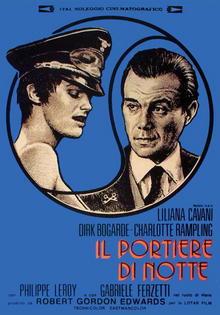
The Night Porter is a 1974 Italian psychological war drama film. Directed and co-written by Liliana Cavani, the film stars Dirk Bogarde and Charlotte Rampling, with Philippe Leroy, Gabriele Ferzetti, and Isa Miranda in supporting roles. Set in Vienna in 1957, the film centers on the sadomasochistic relationship between a former Nazi concentration camp officer (Bogarde) and one of his inmates (Rampling).
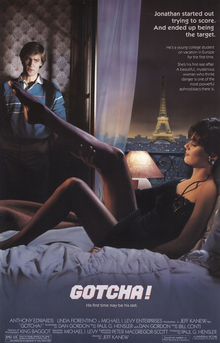
Gotcha! is a 1985 American action comedy film, starring Anthony Edwards and Linda Fiorentino and directed by Jeff Kanew, who also directed Edwards in Revenge of the Nerds in 1984.
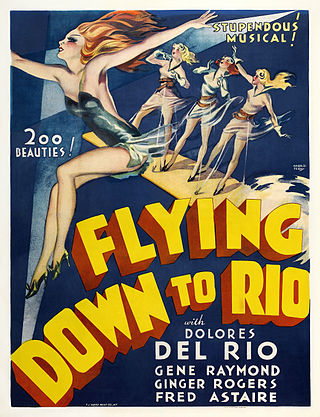
Flying Down to Rio is a 1933 American pre-Code RKO musical film famous for being the first screen pairing of Fred Astaire and Ginger Rogers, although lead actors Dolores del Río and Gene Raymond received top billing. Among the featured players are Franklin Pangborn and Eric Blore. The songs in the film were written by Vincent Youmans (music), Gus Kahn and Edward Eliscu (lyrics), with musical direction and additional music by Max Steiner. During the 7th Academy Awards, the film was nominated for the new category of Best Original Song for "Carioca", but it lost to "The Continental" from The Gay Divorcee, the next Astaire and Rogers film.

Hell's Island is a 1955 American film noir directed by Phil Karlson starring John Payne and Mary Murphy. The film was shot in the VistaVision wide-screen format. Hell's Island was re-released in 1962 under the title South Sea Fury.

Phil Karlson was an American film director. Later noted as a film noir specialist, Karlson directed 99 River Street, Kansas City Confidential and Hell's Island, all with actor John Payne, in the early 1950s.

Mara Corday is an American showgirl, model, actress, Playboy Playmate, and 1950s cult figure.
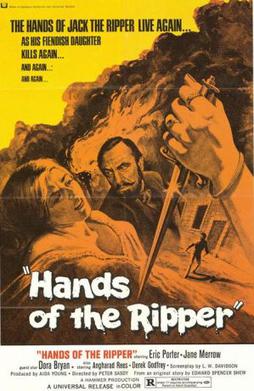
Hands of the Ripper is a 1971 British horror film, directed by Peter Sasdy for Hammer Film Productions. It was written by L. W. Davidson from a story by Edward Spencer Shew, and produced by Aida Young. The film was released in the U.S. as a double feature with Twins of Evil.
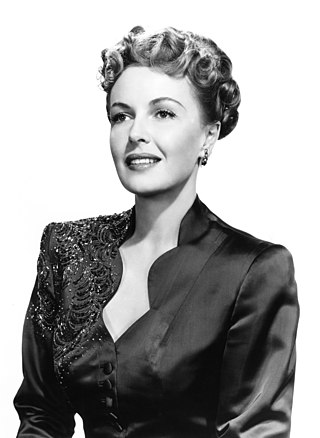
Mary Frances Gifford was an American actress who played leads and supporting roles in many 1930s and 1940s movies.

Glass Houses is a 1972 American drama-romance film released by Columbia Pictures in 1972, but it was filmed in 1970. It is of interest in film history because of the credentials of its key personnel.

House Calls is a 1978 American comedy-drama film directed by Howard Zieff and starring Walter Matthau, Glenda Jackson, Art Carney, and Richard Benjamin.

Istanbul is a 1957 American CinemaScope film noir crime film directed by Joseph Pevney, and starring Errol Flynn and Cornell Borchers. It is a remake of the film Singapore, with the location of the action moved to Turkey. The plot involves an American pilot who becomes mixed up with various criminal activities in Istanbul.

Singapore is a 1947 American film noir crime romance film directed by John Brahm and starring Fred MacMurray, Ava Gardner and Roland Culver. The film was remade as Istanbul (1957) with the location moved to Turkey, and Errol Flynn and Cornell Borchers in the starring roles.

Eva Elizabeth "Eve" McVeagh was an American actress of film, television, stage, and radio. Her career spanned 52 years from her first stage role through her last stage appearance. Her roles included leading and supporting parts as well as smaller character roles in which she proved a gifted character actress.
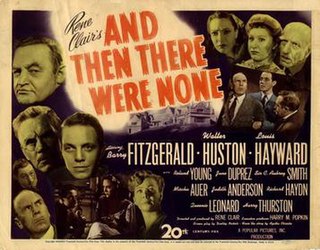
And Then There Were None is a 1945 film adaptation of Agatha Christie's 1939 mystery novel of the same name, directed by René Clair. It was released in the United Kingdom as Ten Little Indians, in keeping with the third United Kingdom title of Christie's novel. The film was produced by 20th Century Fox and due to the lapsed copyright, it is now in the public domain. The film has been remastered multiple times and is freely available online.

The Lone Wolf in London is a 1947 American mystery crime film directed by Leslie Goodwins and starring Gerald Mohr, Nancy Saunders and Eric Blore. The picture features the fictional Scotland Yard detective the Lone Wolf who travels to London, and solves the mystery of some missing jewels. It was the penultimate Lone Wolf film, followed by The Lone Wolf and His Lady in 1949, and the last for Mohr in the lead role.
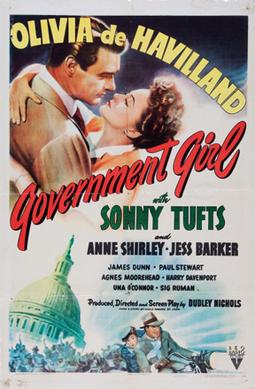
Government Girl is a 1943 American romantic-comedy film, produced and directed by Dudley Nichols and starring Olivia de Havilland and Sonny Tufts. Based on a story by Adela Rogers St. Johns, and written by Dudley Nichols and Budd Schulberg, the film is about a secretary working in Washington for the war administration during World War II who helps her boss navigate the complex political machinations of government in an effort to build bomber aircraft for the war effort.
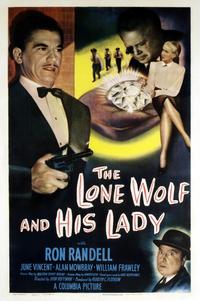
The Lone Wolf and His Lady is a 1949 American mystery film directed by John Hoffman and starring Ron Randell, June Vincent and Alan Mowbray. It is the 15th and final Lone Wolf film produced by Columbia Pictures, and was written by Edward Dein and Michael Stuart Boylan.




















